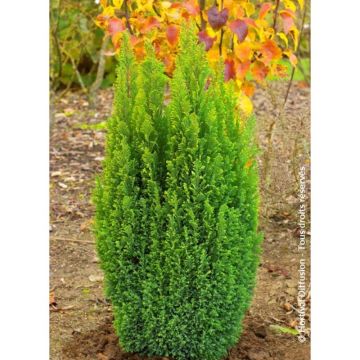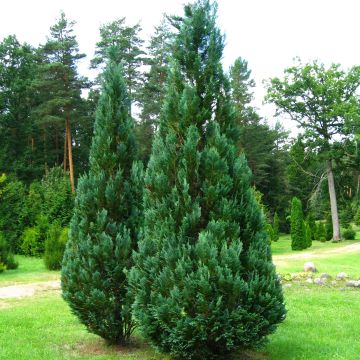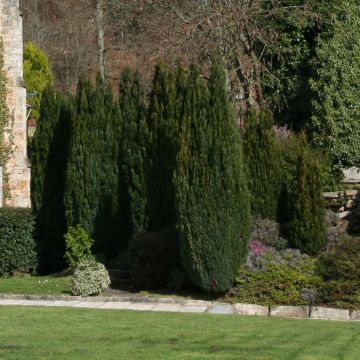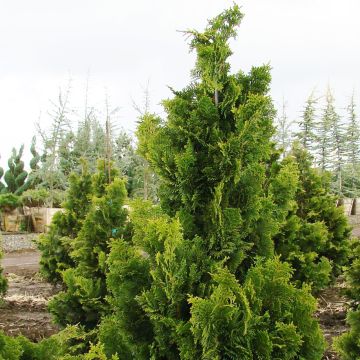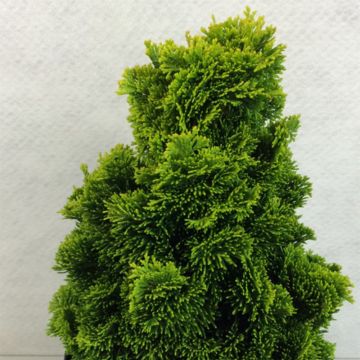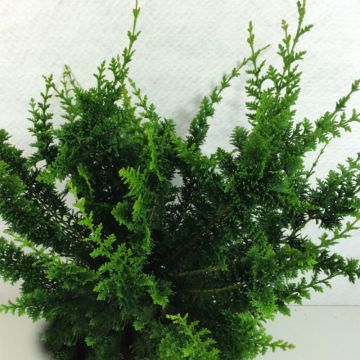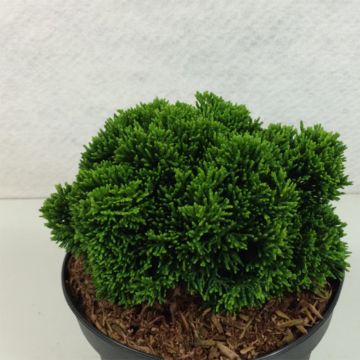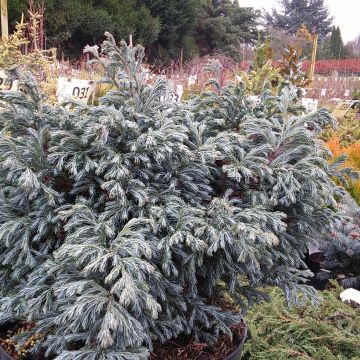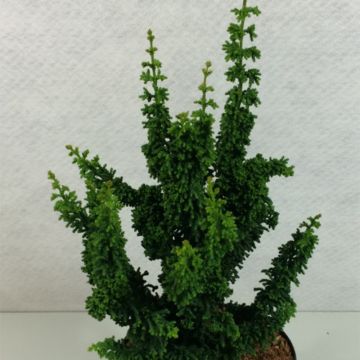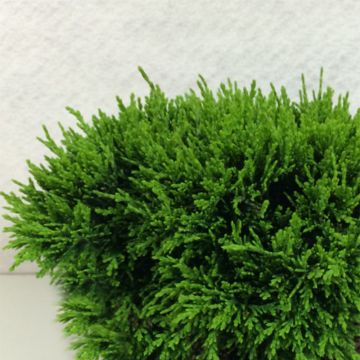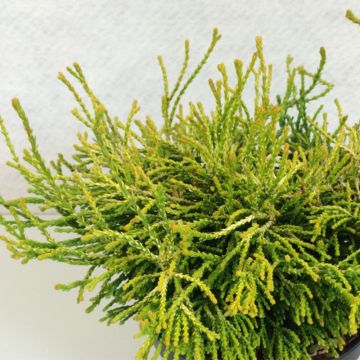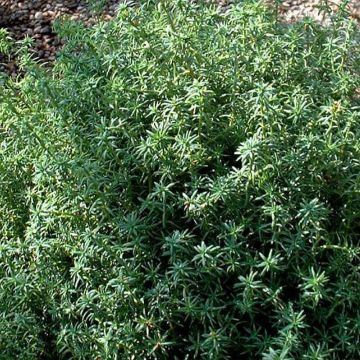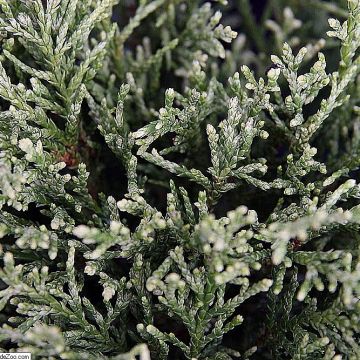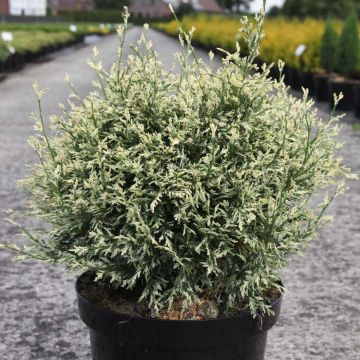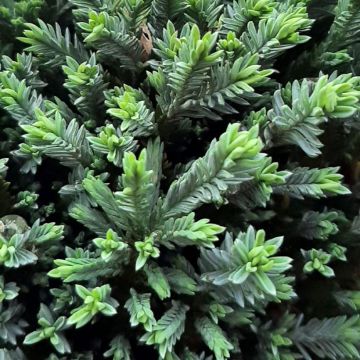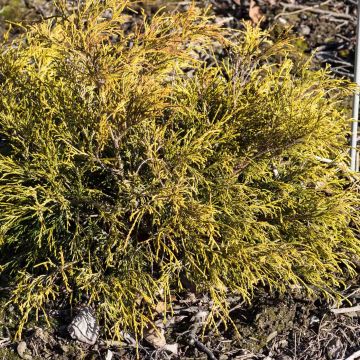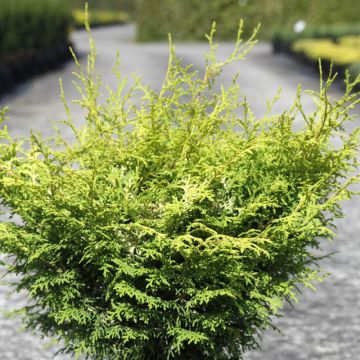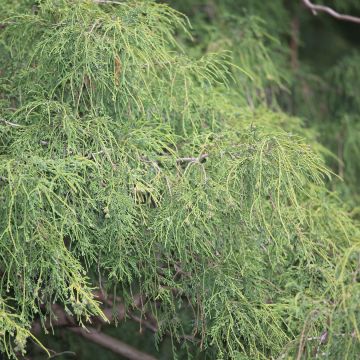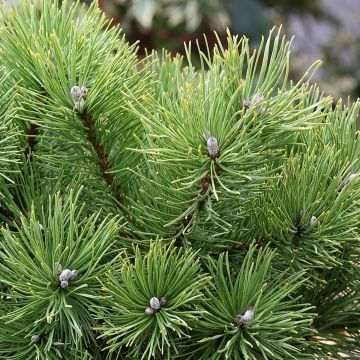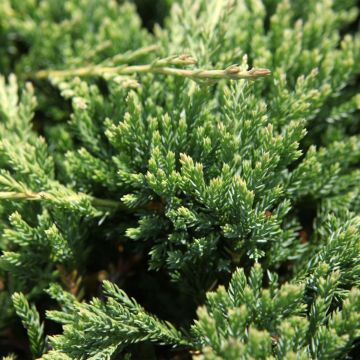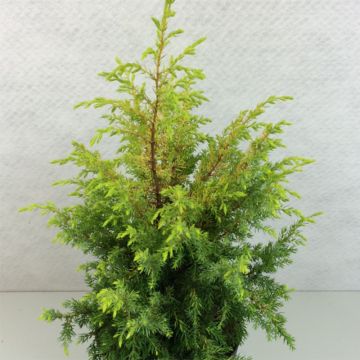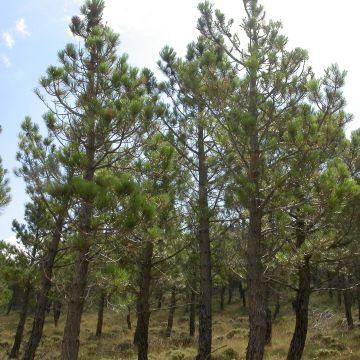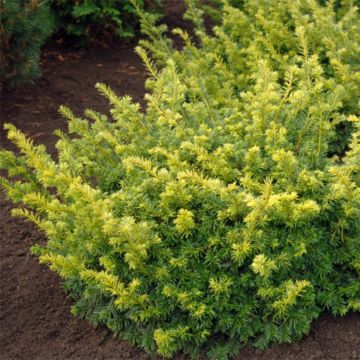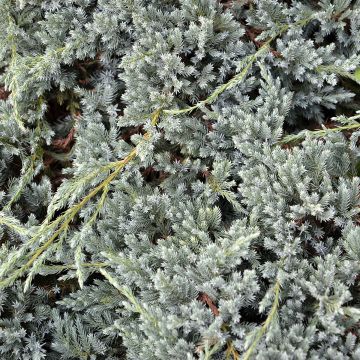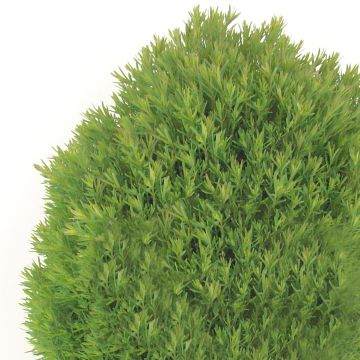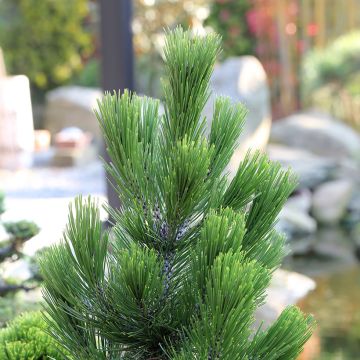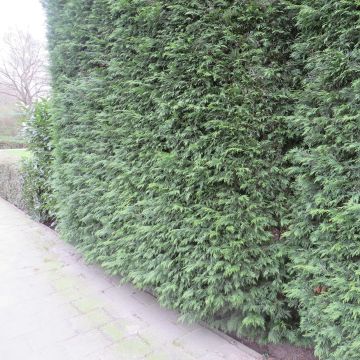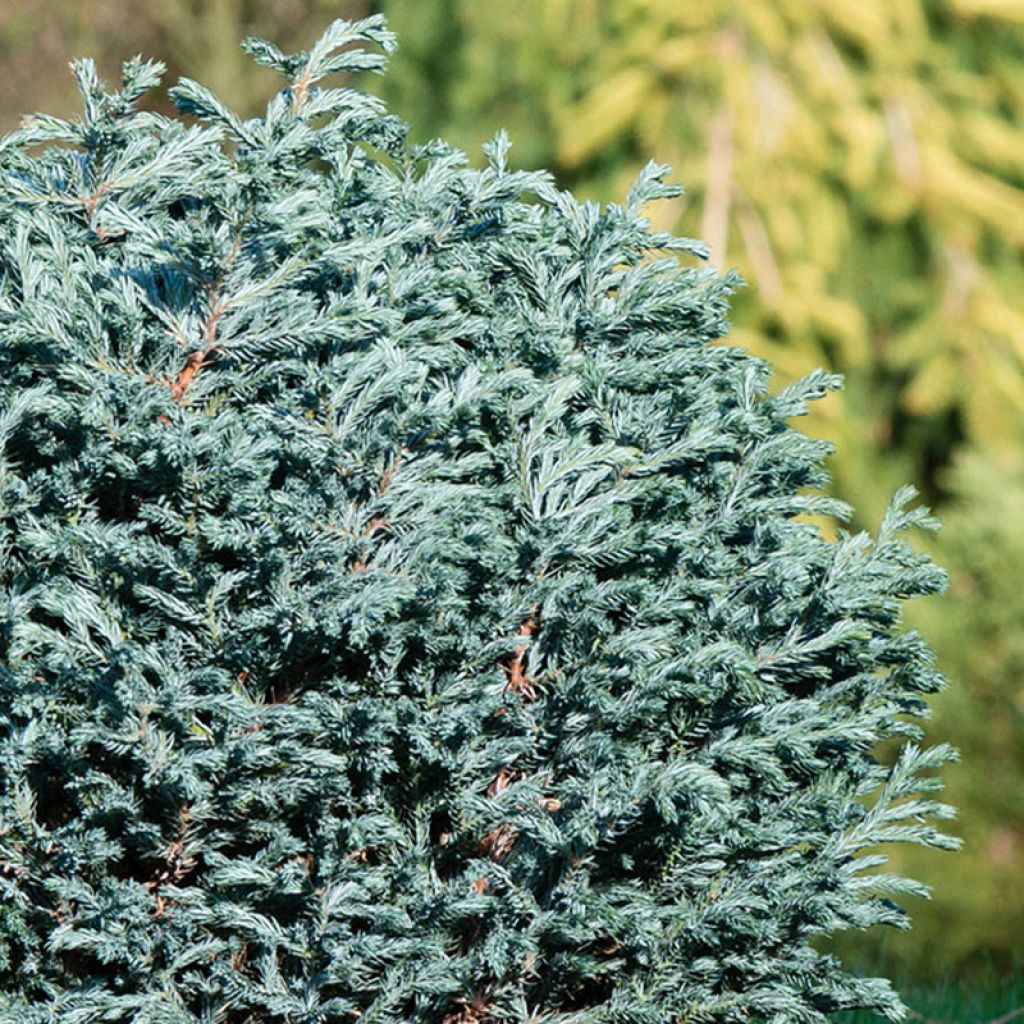

Chamaecyparis pisifera Blue Moon - Sawara Cypress
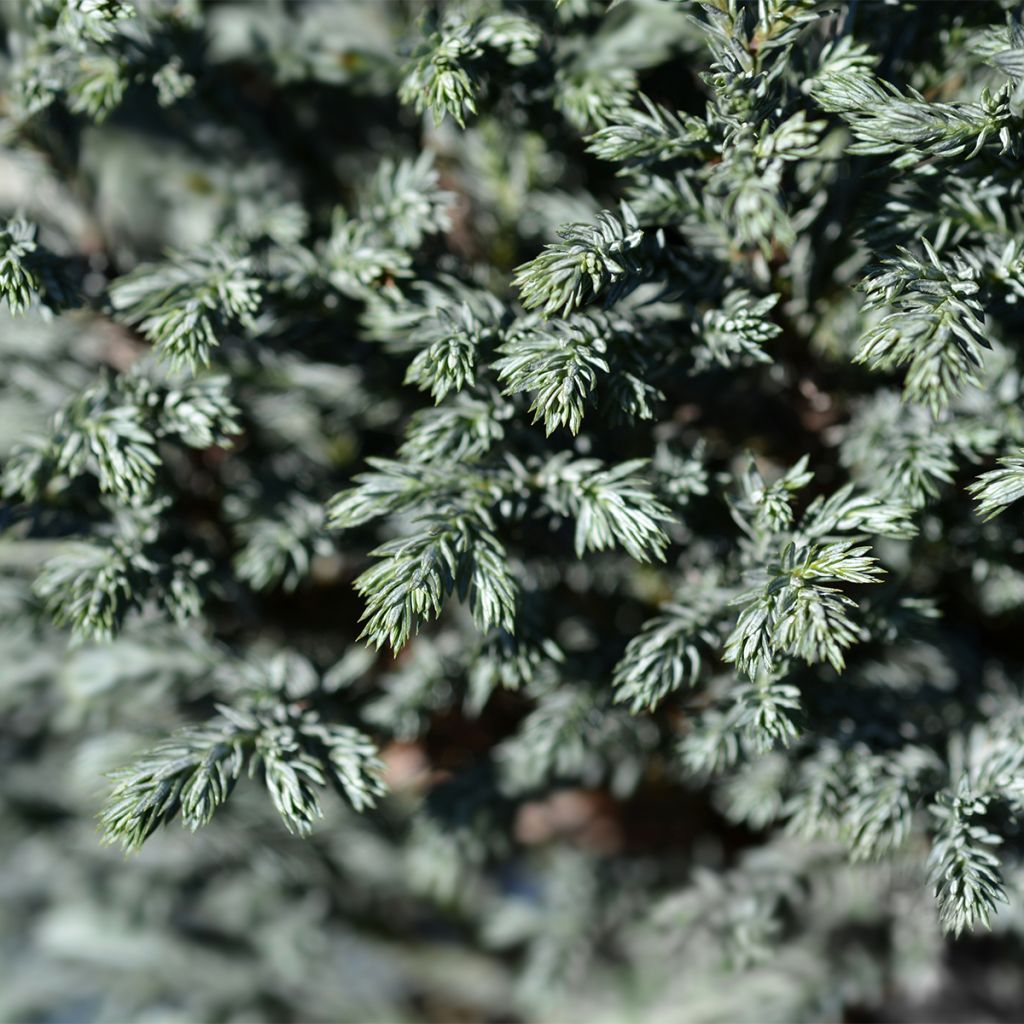

Chamaecyparis pisifera Blue Moon - Sawara Cypress
Chamaecyparis pisifera Blue Moon - Sawara Cypress
Chamaecyparis pisifera Blue Moon®
Sawara Cypress, Japanese false cypress
Why not try an alternative variety in stock?
View all →This plant carries a 24 months recovery warranty
More information
We guarantee the quality of our plants for a full growing cycle, and will replace at our expense any plant that fails to recover under normal climatic and planting conditions.
From €5.90 for pickup delivery and €6.90 for home delivery
Express home delivery from €8.90.
From €5.90 for pickup delivery and €6.90 for home delivery
Express home delivery from €8.90.
Does this plant fit my garden?
Set up your Plantfit profile →
Description
The Chamaecyparis pisifera 'Blue Moon', also known as Sawara Cypress, is a dwarf variety of conifer that grows in a compact and regular ball shape, requiring minimal pruning. It has evergreen foliage, fine, intense silver-blue, and very soft to the touch. Slow-growing, it does not exceed 80 cm (31.5 in) in all directions, making it particularly suitable for container cultivation or rockeries. It is a hardy species that thrives in both sun and partial shade as long as it enjoys a cool, light, well-drained, limestone-free soil.
Chamaecyparis pisifera is a sturdy Japanese tree belonging to the cypress family. It can grow up to 45 m (147 ft 7 in) tall in its natural habitat. It is commonly used for its rot-resistant yellow lemon wood, which is used in the production of lacquered furniture and for constructing various buildings such as palaces in Japan.
There are numerous cultivars of Chamaecyparis pisifera, which are classified into four groups. One is the 'Blue Moon' variety, which grows into a beautiful rounded bush after many years. It measures 80 cm (31.5 in) in all directions and has a growth rate of only 2 to 3 cm (0.8 to 1.2 in) per year.
The branches of this variety are slender and dense, and they are very flexible and slightly trailing. They are covered with intense silver-blue foliage that becomes green-blue in the shade. The juvenile leaves are needle-like, rigid, pointed, and light green, while the adult leaves are scale-like, pointed, and darker. The undersides of the leaves show a very pronounced white band, corresponding to a row of stomata (the 'pores' on the plant's epidermis). The bark is barely visible and is dark red with a stringy appearance.
Chamaecyparis pisifera 'Blue Moon' is a highly appreciated small conifer in gardens for its symmetrical habit and the original colour of its foliage. It is ideal for planting in pots on the terrace and in a rock garden. Its very slow growth and round shape requires no pruning and looks stunning alongside taller varieties with a columnar, pyramidal, or narrow conical habit.
Dwarf conifers like Chamaecyparis pisifera 'Blue Moon' naturally provide lasting structure to a bed, mark pathways, and border the terrace in a contemporary garden. They are perfect for softening the strong presence of trimmed boxwood. They can also be used in a mixed hedge or combined with ground cover plants like aubrietas, cerastiums, and flowering shrubs. The key is to play with volumes and colours.
Report an error about the product description
Chamaecyparis pisifera Blue Moon - Sawara Cypress in pictures
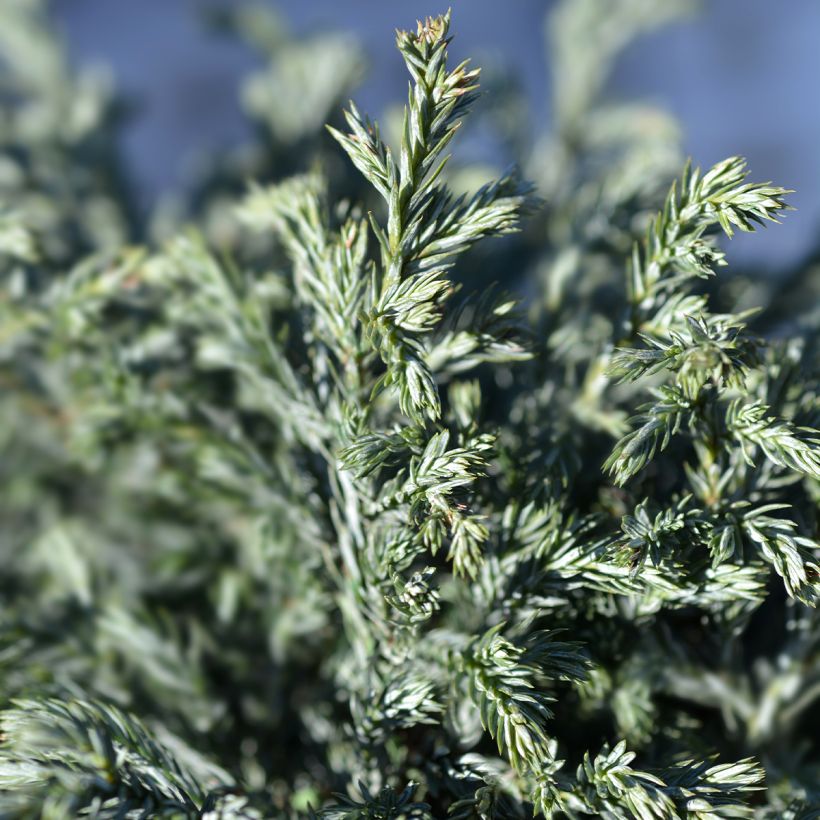

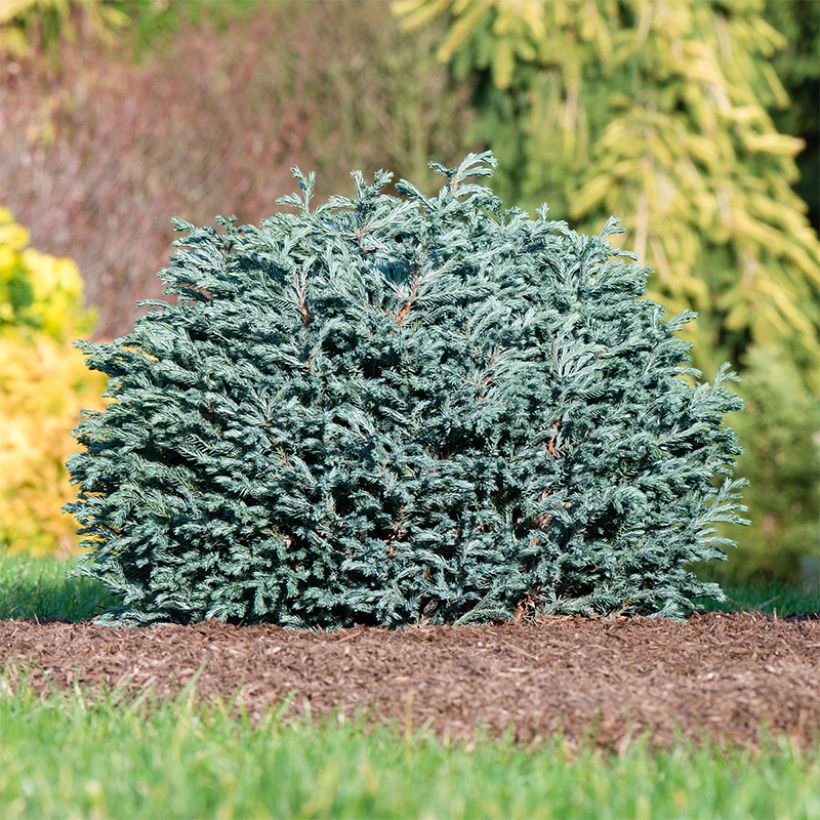

Plant habit
Foliage
Botanical data
Chamaecyparis
pisifera
Blue Moon®
Cupressaceae
Sawara Cypress, Japanese false cypress
Cultivar or hybrid
Other Chamaecyparis
Planting and care
It is best to plant the Chamaecyparis pisifera 'Blue Moon' between September and November or from February to June. When planting, choosing an area that is semi-shaded or sunny and sheltered from strong winds is essential. The soil should be fertile, moist, and well-drained, with a preference for light, neutral, or slightly acidic soil. You can use humus-rich soil or a mixture of ericaceous soil for planting. Before planting, make sure to soak the root balls well. Adding organic material when planting and watering generously in the first few years is recommended. Apply a special conifer fertiliser every April and cultivate the soil in summer. This conifer does not require pruning.
Planting period
Intended location
Care
This item has not been reviewed yet - be the first to leave a review about it.
Conifers
Haven't found what you were looking for?
Hardiness is the lowest winter temperature a plant can endure without suffering serious damage or even dying. However, hardiness is affected by location (a sheltered area, such as a patio), protection (winter cover) and soil type (hardiness is improved by well-drained soil).

Photo Sharing Terms & Conditions
In order to encourage gardeners to interact and share their experiences, Promesse de fleurs offers various media enabling content to be uploaded onto its Site - in particular via the ‘Photo sharing’ module.
The User agrees to refrain from:
- Posting any content that is illegal, prejudicial, insulting, racist, inciteful to hatred, revisionist, contrary to public decency, that infringes on privacy or on the privacy rights of third parties, in particular the publicity rights of persons and goods, intellectual property rights, or the right to privacy.
- Submitting content on behalf of a third party;
- Impersonate the identity of a third party and/or publish any personal information about a third party;
In general, the User undertakes to refrain from any unethical behaviour.
All Content (in particular text, comments, files, images, photos, videos, creative works, etc.), which may be subject to property or intellectual property rights, image or other private rights, shall remain the property of the User, subject to the limited rights granted by the terms of the licence granted by Promesse de fleurs as stated below. Users are at liberty to publish or not to publish such Content on the Site, notably via the ‘Photo Sharing’ facility, and accept that this Content shall be made public and freely accessible, notably on the Internet.
Users further acknowledge, undertake to have ,and guarantee that they hold all necessary rights and permissions to publish such material on the Site, in particular with regard to the legislation in force pertaining to any privacy, property, intellectual property, image, or contractual rights, or rights of any other nature. By publishing such Content on the Site, Users acknowledge accepting full liability as publishers of the Content within the meaning of the law, and grant Promesse de fleurs, free of charge, an inclusive, worldwide licence for the said Content for the entire duration of its publication, including all reproduction, representation, up/downloading, displaying, performing, transmission, and storage rights.
Users also grant permission for their name to be linked to the Content and accept that this link may not always be made available.
By engaging in posting material, Users consent to their Content becoming automatically accessible on the Internet, in particular on other sites and/or blogs and/or web pages of the Promesse de fleurs site, including in particular social pages and the Promesse de fleurs catalogue.
Users may secure the removal of entrusted content free of charge by issuing a simple request via our contact form.
The flowering period indicated on our website applies to countries and regions located in USDA zone 8 (France, the United Kingdom, Ireland, the Netherlands, etc.)
It will vary according to where you live:
- In zones 9 to 10 (Italy, Spain, Greece, etc.), flowering will occur about 2 to 4 weeks earlier.
- In zones 6 to 7 (Germany, Poland, Slovenia, and lower mountainous regions), flowering will be delayed by 2 to 3 weeks.
- In zone 5 (Central Europe, Scandinavia), blooming will be delayed by 3 to 5 weeks.
In temperate climates, pruning of spring-flowering shrubs (forsythia, spireas, etc.) should be done just after flowering.
Pruning of summer-flowering shrubs (Indian Lilac, Perovskia, etc.) can be done in winter or spring.
In cold regions as well as with frost-sensitive plants, avoid pruning too early when severe frosts may still occur.
The planting period indicated on our website applies to countries and regions located in USDA zone 8 (France, United Kingdom, Ireland, Netherlands).
It will vary according to where you live:
- In Mediterranean zones (Marseille, Madrid, Milan, etc.), autumn and winter are the best planting periods.
- In continental zones (Strasbourg, Munich, Vienna, etc.), delay planting by 2 to 3 weeks in spring and bring it forward by 2 to 4 weeks in autumn.
- In mountainous regions (the Alps, Pyrenees, Carpathians, etc.), it is best to plant in late spring (May-June) or late summer (August-September).
The harvesting period indicated on our website applies to countries and regions in USDA zone 8 (France, England, Ireland, the Netherlands).
In colder areas (Scandinavia, Poland, Austria...) fruit and vegetable harvests are likely to be delayed by 3-4 weeks.
In warmer areas (Italy, Spain, Greece, etc.), harvesting will probably take place earlier, depending on weather conditions.
The sowing periods indicated on our website apply to countries and regions within USDA Zone 8 (France, UK, Ireland, Netherlands).
In colder areas (Scandinavia, Poland, Austria...), delay any outdoor sowing by 3-4 weeks, or sow under glass.
In warmer climes (Italy, Spain, Greece, etc.), bring outdoor sowing forward by a few weeks.

































